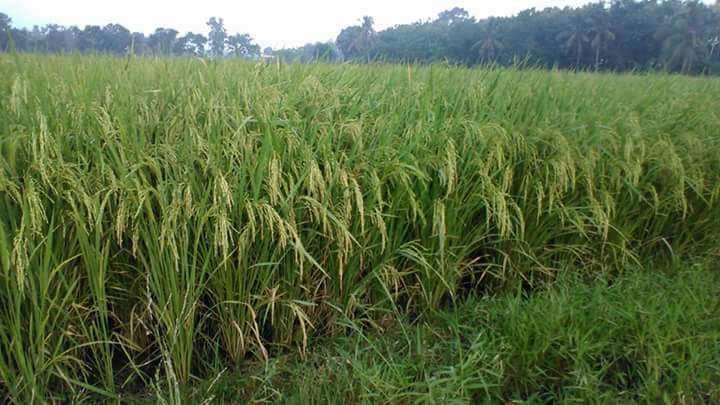The use of synthetic pesticides is often the primary choice of farmers in Indonesia, and to reduce the pest population in a short time. Pesticides vary depending on the type of pest that appears at various stages of the plant. The active ingredients of pesticides that are often applied in East Java, especially in Jombang, Lamongan and Probolinggo Regency are Aceptate, Chlorantraniliprole, Dimehypo, Fenobucarb, Methomyl, Profenofos, Chlorothalonil and Chlorpyrifos (Interview with local farmers, 2018). The use of synthetic pesticides affects the diversity of soil microflora and soil nutrient content needed by plants, including macronutrients and micronutrients.
Micronutrients nutrients are needed by plants in small amounts, but their functions are essential and irreplaceable. Macro elements are nutrients that are required by plants in relatively more quantities than other nutrients. One of the most widely used pesticide groups by farmers is organophosphate. The pesticide also biodegradable, do not last long, and quickly disappear naturally. Profenophos is a type of insecticide that belongs to the organophosphate group, has moderate toxicity and has a half-life of about 43 days (half-hydrolysis), an average of 2 days (aerobic half-life) or around three days (half-aerobic anaerobes).
Profenofos is a medium acute chemical, a carcinogenic known as groundwater pollutant, and is toxic to reproductive organs. Acute toxicity occurs only in the content of pure active ingredients. While chlorantraniliprole is an ingredient of the diamide group and its mechanism of action attacks the nerve, it can control pests from the Coleoptera, Diptera, Isoptera, and Lepidoptera families such as Spodoptera exigua. Chlorantraniliprole is a nerve and muscle poison. It activates ryanodine receptors and opens calcium ion channels in the sarcoplasmic reticulum of muscle cells which causes excessive release of calcium ions which disrupt the regulation of muscle contraction and result in paralysis. Insects affected by this insecticide have symptoms of stopping eating, body contractions, inactivity, and eventually die. Application of pesticides will not cause problems as long as their use is controlled and appropriate, but their effects on soil microbial life need to be considered.
The level of fertility in soil ecosystems depends on the role of microbial populations to be able to convert organic matter. The soil microbial population acts as an indicator of the stability of nutrient availability when the soil is contaminated with pesticides. Fungi and bacteria are soil microbes that can be used as bioindicators based on the ability of life and microflora activity. The response of soil microbes to pesticides influenced by their chemical composition and the effect of pesticides is more pronounced on the structure of the community compared to the physiological activities of the germs. Therefore, this study will explore bacteria that can degrade Profenofos and Chlorantraniliprole in soybean fields in Jombang, Lamongan and Probolinggo areas to test the potential of these microbes in degrading pesticides, to determine the microbial consortium that can degrade Profenofos and Chlorantraniliprole soybean fields, and to improve the structure of these microbes in degrading pesticides, to establish the microbial consortium that can degrade Profenofos and Chlorantraniliprole soybean fields, and to improve the structure of these microbes soil.
Potential tests and antagonistic tests were carried out using the diffusion method, and pesticide degradation tests were carried out using the in-house HPLC method. The results found 39 Profenofos degrading isolates and 30 Chlorantraniliprole degrading isolates. The bacterial consortium test found 10 Profenofos degrading isolates, 3 nitrogen-binding isolates, and 2 phosphate solvent isolates that can reduce Profenofos in control, incubation treatment 0, 2 and 4 days at 100%, 78.83%, 75.36%, and 62.3% and can reduce Chlorantraniliprole respectively by 100%, 88.46%, 74.36%, and 73.08%. The biggest decrease occurred on the 4th-day incubation.
Author: Agoes Soegianto
Detail writing about this research can be seen at
Mahanani Tri Asri, Yuliani, Tarsan Purnomo, Fida Rachmadiarti, Evie Ratnasari dan Agoes Soegianto. 2019. Potential of Indonesian endemic microbial consortium in degrading profenofos and chlorantraniliprole pesticide in East Java Indonesia to support agricultural ecosystems. Ecology, Environment and Conservation Paper, Vol 25, July Suppl. Issue, 2019; Page No.(S85-S90)





